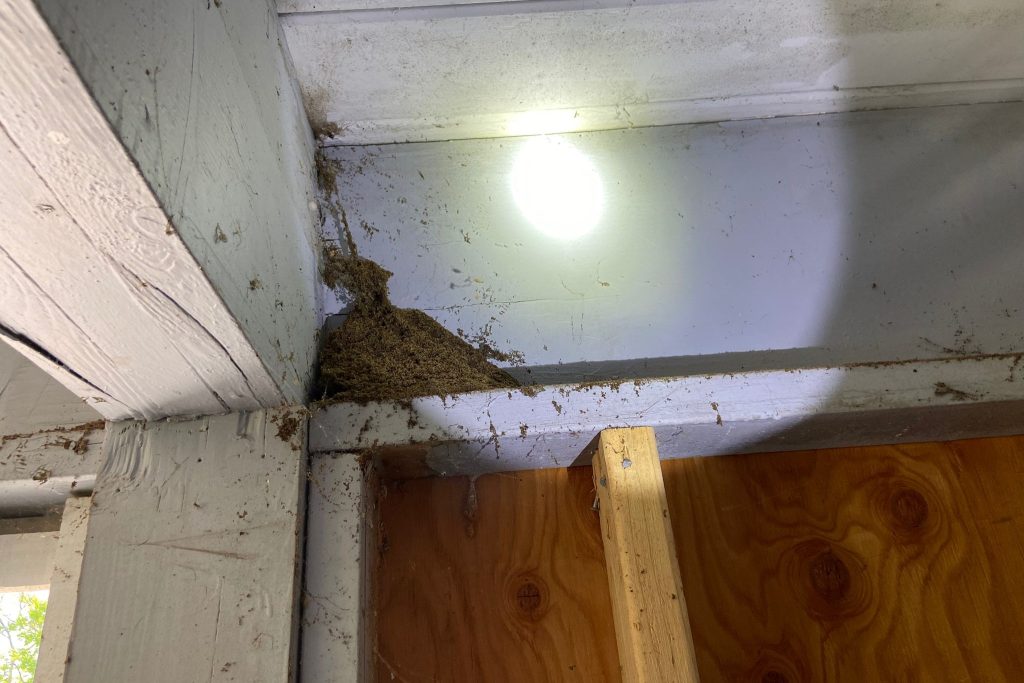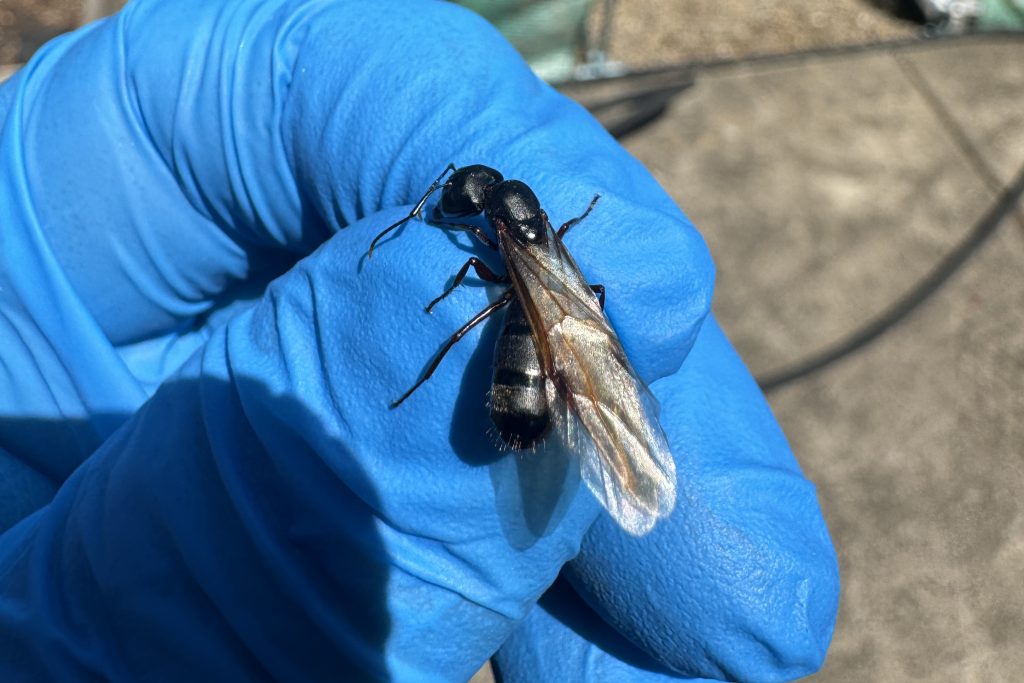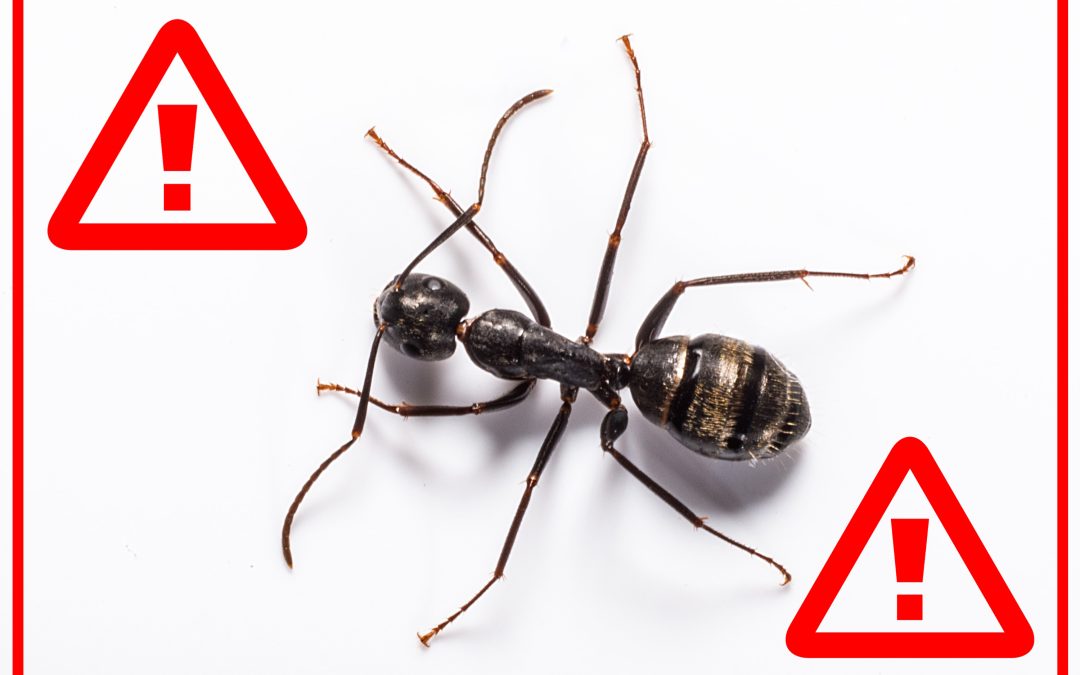Signs of a Carpenter Ant Infestation
Carpenter ants are among the most common pests that can invade your home or property. Each year, they cause significant property damage across many Oregon homes. Unlike termites, carpenter ants do not eat wood; instead, they excavate it to create smooth, hollowed-out galleries for nesting. Recognizing the signs of a carpenter ant infestation early can help you take swift action to prevent significant damage. Here are 8 key indicators of a carpenter ant infestation:
- Presence of Large Black Ants
-
- Size and Color: Carpenter ants are larger than most ants, ranging from 1/4 to 1/2 inch in length. They are typically black but can also be red, orange, or a combination of colors.
- Activity: You might see them foraging for food, especially in the evening or at night when they are most active.
Check my previous article on why you might see Carpenter Ants inside during the spring: CLICK HERE!
- Sawdust-like Frass
-
- Frass: Carpenter ants create frass, a sawdust-like material, as they excavate wood. This frass is a mix of wood shavings, soil, and ant body parts.
- Location: Look for frass piles near wooden structures, baseboards, window sills, or anywhere wood is present.

Visible sawdust on wall framing, a telltale sign of carpenter ant activity.
- Rustling Noises in Walls
-
- Sound: If the infestation is severe, you might hear faint rustling or tapping sounds coming from within walls or wooden structures as the ants move around. However, similiar sounds can be created by other pests that infest homes.
- Hollow-sounding Wood
-
- Inspection: Tap on wooden structures. If the wood sounds hollow or papery, it could indicate that carpenter ants have hollowed out the interior.
- Winged Ants (Swarmers)
-
- Appearance: Swarmers, or reproductive ants, have wings and are usually seen during the spring or early summer.
- Location: Finding winged ants inside your home is a strong indicator of an indoor nest.

A Good Earth technician carefully holds a carpenter ant queen swarmer, showcasing its size and distinct features.
- Moisture-damaged Wood
-
- Preference: Carpenter ants are attracted to moisture-damaged wood. Check areas with water damage, such as around windows, roofs, chimneys, sinks, bathtubs, and areas with plumbing leaks.
- Visible Ant Trails
-
- Trails: Carpenter ants establish well-defined trails between their nest and food sources. Look for these trails along walls, foundation edges, and baseboards.
- Outdoors: You may also notice trails leading from the ground to trees, stumps, or wooden structures outside. Carpenter ants also like to traffic along fences and utility lines that are connected to the structure.
- Satellite Colonies
-
- Multiple Nests: Carpenter ants rarely make their main nest inside a home. The Queen needs high moisture and humidity to lay her eggs and this is best found outside. Once the initial colony outgrows its first home the queen will send out workers to establish satellite colonies. It is the queenless satellite colonies that are typically found in homes. These can be found in various locations, including wall voids, insulation, and hollow doors.
What to Do if You Suspect a Carpenter Ant Infestation?
If you observe any of these signs, it’s important to take action promptly:
-
- Inspection: Conduct a thorough inspection of your property to identify the extent of the infestation and locate the nest.
- DIY Measures: Carpenter ant control can be tricky and is best left to professionals. Instead of attempting to treat them yourself, (which can often make matters worse if you don’t have the proper knowledge and tools) your efforts can be best concentrated on preparation. Trimming bushes plants and trees away from the home and removing any storage and firewood that is against the foundation is a crucial step in preparing the site for service.
- Professional Help: If the infestation is confirmed, consider contacting a professional pest control service. Professionals have the expertise and tools to eradicate carpenter ants and prevent future infestations.
Recognizing the signs of a carpenter ant infestation and taking early action can help protect your property from significant structural damage. Regular maintenance, prompt repairs of moisture issues, and vigilance can go a long way in keeping your home carpenter ant-free.
By understanding the signs of a carpenter ant infestation and taking early action, you can protect your property from significant structural damage. Stay informed, stay safe, and maintain your home to keep it carpenter ant-free!
Adam Hiddelson



